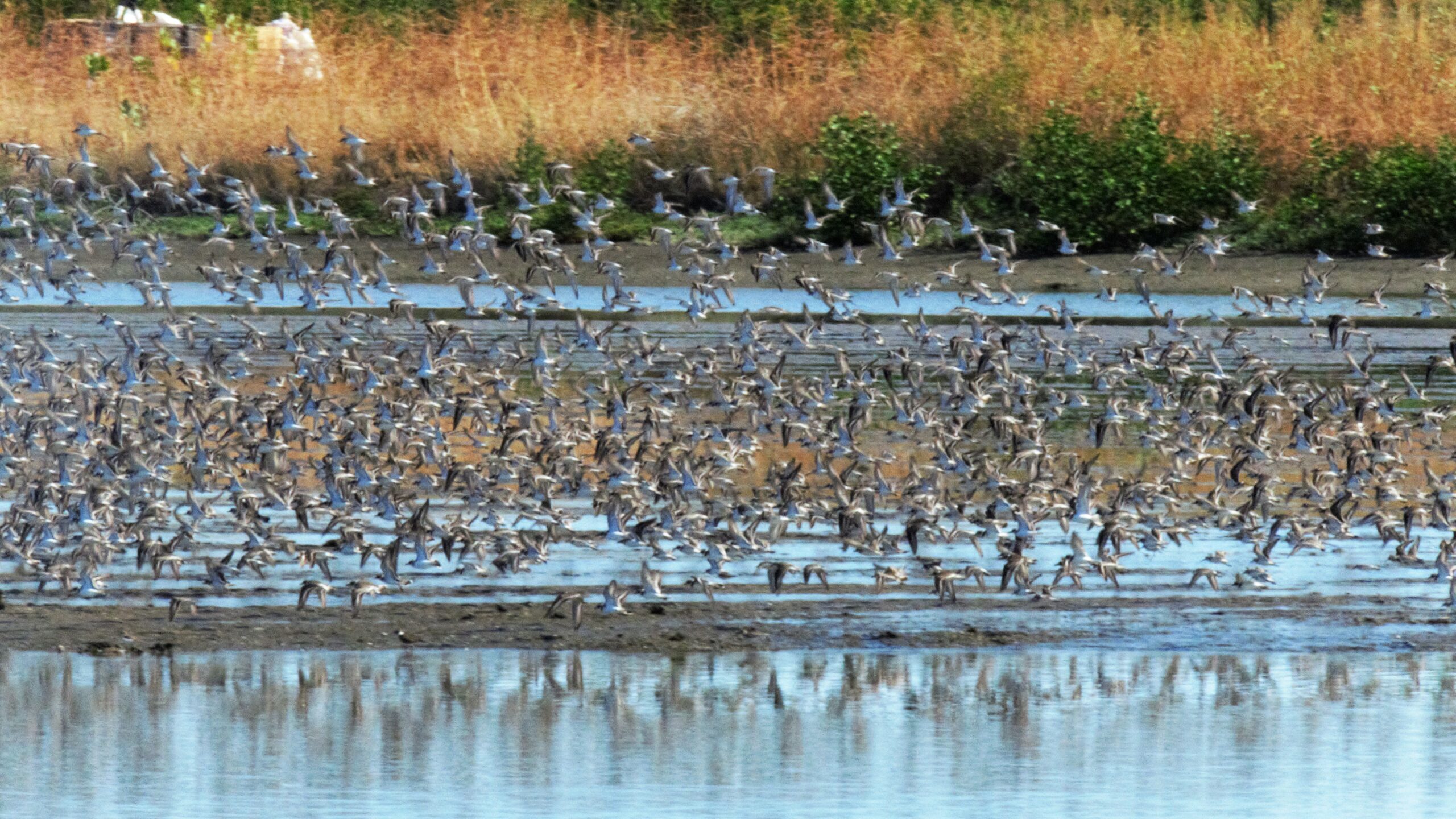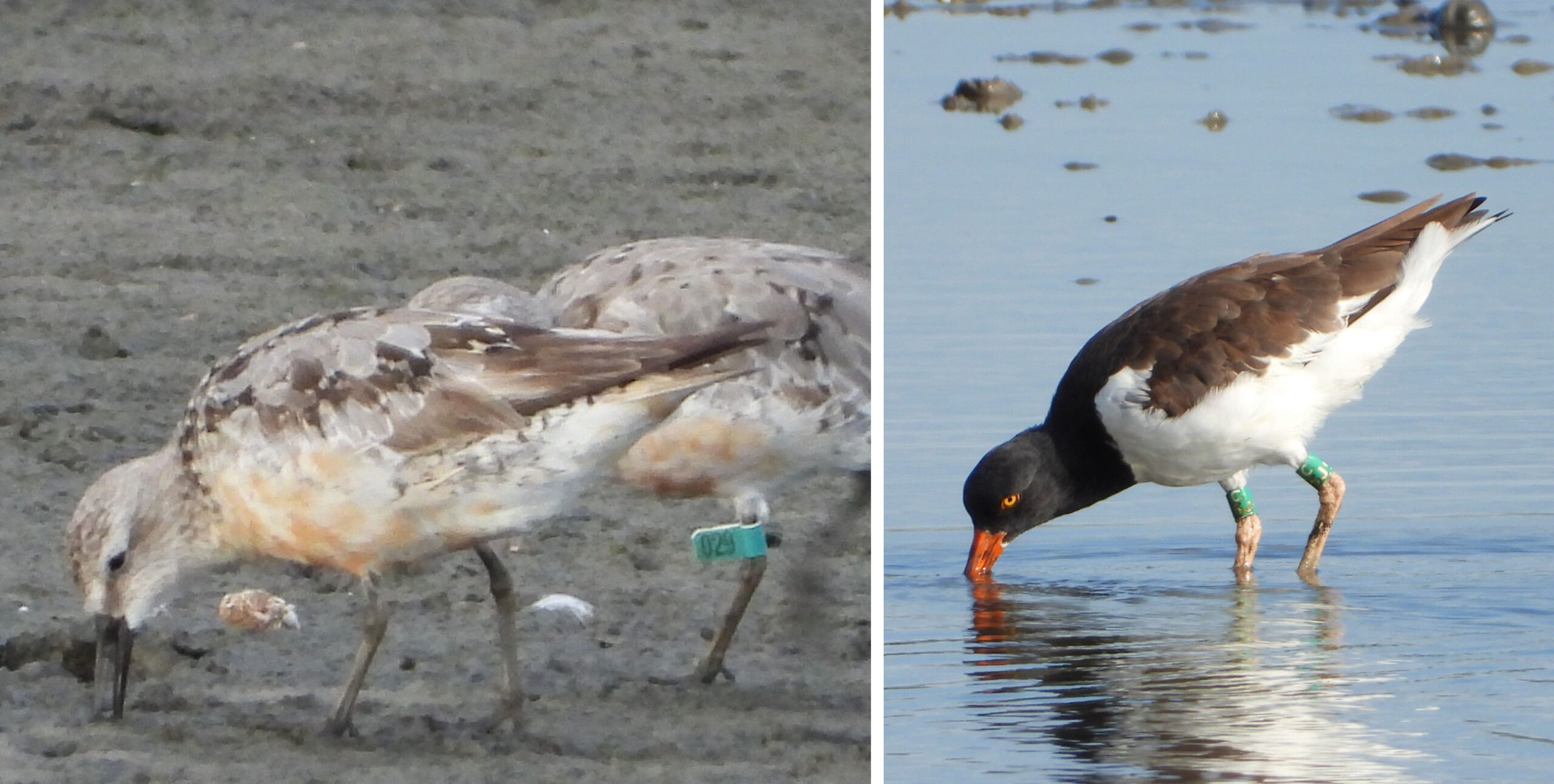Shorebirds thrive in habitats like intertidal mudflats, natural salt flats, mangroves, white sand and gravel beaches, marshes, and seasonal freshwater wetlands. A Red Knot, for example, spends its nesting season in northern Canada then migrates south to its wintering grounds, resting at key stopover sites like Cape Cod, Massachusetts, which offers nutrient-dense coastal marshland and beaches. It then heads to the Pacific Ocean, where it finally lands in the Gulf of Fonseca, a rich tidal mudflat bordering El Salvador, Honduras, and Nicaragua. Manomet scientists have found that some of the best shorebird habitat exists within “working landscapes,” areas outside of conservation areas used for farming, forestry or ranching. The Gulf of Fonseca is one of these sites which host sizeable shrimp farms.
Tidal mudflats are a common habitat type found near many Latin American shrimp farms. As the tide flows in and out, it stirs up key food sources, providing an easy dinner for visiting shorebirds. Once those areas fill up at high tide, the birds look for places to roost (rest). We therefore find ourselves working alongside producers to optimize shorebird conditions in and around shrimp farms.
Alberto Obregon is the Environmental Manager for Seajoy-Cooke, one of Latin America’s largest farmed-shrimp producers. He studied ecology and natural resources at Central American University with Salvadora Morales, Conservation Specialist for Manomet supporting the Western Hemisphere Shorebird Reserve Network (WHSRN) site. “About eight years ago, during a field study at the shrimp farm, I got to go out and observe a team of scientists catch and band birds. That was the first time I saw a bird up-close,” said Obregon. Central American University is a pioneer in aquaculture research, and is where Obregon focused his studies on the effects of climate change on shrimp farming before joining Seajoy as Best Practices Manager.
Shrimp farms can be an excellent stopover resource for migratory shorebirds. At the end of an exhausting flight, shorebirds like Red Knot, Wilson’s Plover, Whimbrel, and American Oystercatcher are desperate for nutrient-rich fuel.
Shrimp farms are usually comprised of ponds, water reservoirs, and dikes. Ponds can have large amounts of food, including bristle worms, crabs, mussels, and barnacles, sitting at the ground’s surface after every harvest. That, combined with exposed banks running around the farm’s edge makes for a migratory shorebird’s paradise. Understanding how the alteration of coastal wetlands associated with shrimp farms affects migratory shorebirds can help reduce population declines and, ultimately, biodiversity loss (Navedo and Fernández 2018).





 Back to all
Back to all


